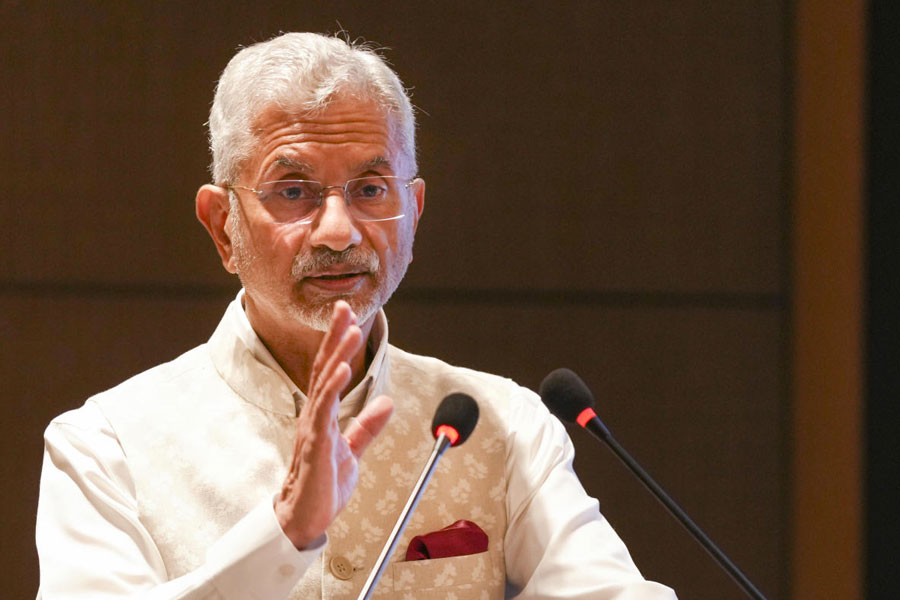 |
Lunar exploration is undergoing something of a renaissance in space research. The recent success of the European Space Agency’s Smart-1 mission, a renewed interest in the US in returning astronauts to the moon and promising ventures by space-faring nations like India, China and Japan have put lunar science back in the limelight. “The interest in the moon signifies its scientific importance as a recorder of events in the early solar system that may not be preserved anywhere else,” says Manuel Grande, group leader, Planets and Space Plasma Group, Rutherford Appleton Laboratory in the UK. Grande’s team has designed a state-of-the art X-ray spectrometer called D-CIXS (Demonstration Compact Imaging X-ray Spectrometer) aboard Smart-1, which measures the ground composition of the moon through remote sensors. D-CIXS has also been selected by the Indian Space Research Organisation’s (ISRO) for its unmanned moon mission Chandrayaan-1, scheduled for launch next year.
Although astronauts of the Apollo mission walked on the moon in the 1970s and brought back rocks that have been exhaustively analysed in the best laboratories in the world, there is an astounding amount scientists still don’t know about our very own satellite. Much of what is known so far has been extrapolated from those samples. Because those bits and pieces of rocks had striking similarities with those found on earth, scientists hypothesise that the moon was once part of the earth. Furthermore, computer simulations have shown that an object ? the size of a small planet ? could have struck the earth early in its history, blasting off the rocks that formed the moon. Known as the Impactor theory, this has become the most popular theory for the moon’s origin.
However, several space scientists like Grande believe that such conclusions about the origin of the moon and the earth from a few rocks need more data. “When the Apollo astronauts went to the moon, their purpose was to go to the moon and come home safely. So they landed in a sensible and safe place to come home from,” says Grande. “They landed on the earth side, on the equator ? the flattest bits on the moon. If you followed the same approach on earth, you’d land in the Sahara and you’d come home with a third of a ton of sand.” In other words, the samples that came back with the astronauts were from specific areas on the moon. “They weren’t truly ‘global’ (or rather lunar) samples. What’s badly needed is to come up with global composition measurements of the moon and these will confirm whether our current best theory of earth-moon formation is in fact the right one.”
 |
 |
| DESTINATION MOON: (Top) US astronaut Edwin E. Aldrin Jr. walking on the surface of the moon; an artist’s impression of India’s first mission to the moon |
Solving mysteries
With global measurements of the elemental compositions of surface rock across the entire moon, Grande and other scientists look forward to answering some of the lingering questions about our satellite’s formation. “The most enigmatic question about the moon is its origin,” says Narendra Bhandari, head of the planetary sciences and exploration programme, Physical Research Laboratory, Ahmedabad. “Key questions remain unsolved because the moon’s interior composition is not known,” he adds.
Analysis of the data provided by D-CIXS should provide information needed to clear up any doubts about the current formation theory, or could show that a new theory is needed. For instance, the measurement of the ratio of magnesium to iron on the moon will be very important, Grande says. If it is true that the moon was formed from the debris of a collision between the earth and some other body, the ratio of magnesium to iron across the moon’s surface should be within a certain range. Scientists expect that range to actually be lower for the moon than it is for the earth ? the difference has to do with the thermal history of each body after the supposed collision.
D-CIXS is designed to fill in a large piece of the lunar puzzle by measuring the elements that are the most important components of rocks: magnesium, aluminum, silicon, calcium. DCIXS is actually a tiny instrument ? about the size of a 2-slice toaster. It’s a sophisticated miniaturisation of an X-ray spectrometer that employs radical new technology to greatly reduce the mass and volume of the instrument. Built at the Rutherford Appleton Laboratory in the UK, it is a new technological evolution, centring on a purpose-designed matrix of the newly developed Swept Charge Device (SCD) X-ray sensors mounted behind low profile gold/copper collimators and aluminium thin film filters. The system has the virtue of providing superior X-ray detection, and spectroscopic and remote sensing capabilities.
During the scheduled two-year mission of Chandrayaan-1, D-CIXS will orbit the moon several times, taking compositional measurements of the entire lunar surface. “The biggest advantage with Chandrayaan-1 will be its lower orbit than the European Space Agency’s Smart-1 mission which will give D-CIXS a better spatial resolution,” says Grande. According to Bhandari, India’s moon craft is going to orbit above the lunar poles at a relative low altitude (100 km). “It can complement, to some extent, the information which can be obtained from lunar landing and sample return missions, by providing a synoptic view of the moon.”
All-terrain map
If all works according to design, scientists will get direct information about what makes up the moon, information from all terrain and latitudes around the entire moon ? from the bottoms of craters to the tops of mountains.
According to the standard moon-formation theory, after the moon was blasted from the earth, the satellite would have gone through an age when an ocean of molten rock covered its entire surface. This magma ocean would have been at least several miles deep. As the moon cooled, certain lighter minerals would be the first to solidify on the top of this ocean. Scientists refer to this as the scum on top of the magma ocean. It would condense in much the same way that a freezing lake forms slush, then ice. This top layer would have a predictable composition and a predictable ratio of magnesium to iron ? a ratio that should be lower than it is for the rocks on the earth because of the moon’s different thermal history.
“A lower magnesium number is about what you would expect,” Grande says. “What would really confound things is if it comes up the same number. Because that ? when you go into this rock-melt stuff in detail ? would be incompatible with the original earth-mantle source material.”
“It would prove that the earth and the moon could not have come from the same place, and that would in fact put our current theories in jeopardy. So this is really a tough test of our theories of where the earth and the moon came from,” he says. “What we’re hoping of course is that once we’ve proved the principle, we’ll then be able to fly this instrument all around the solar system.”










